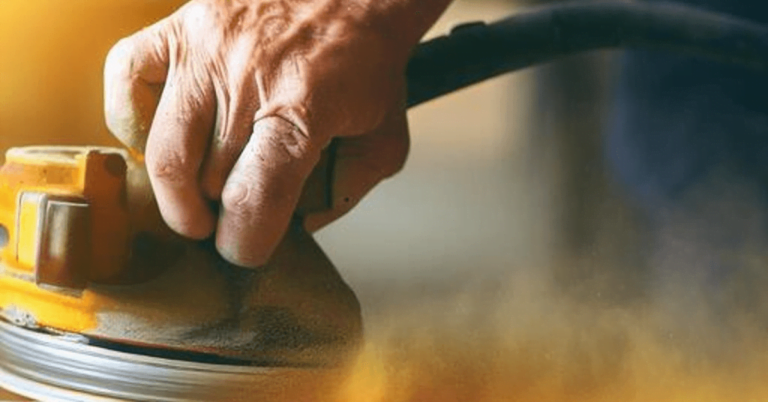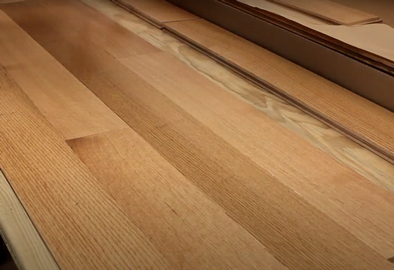How Long Does Hardwood Need To Acclimate
When it comes to installing hardwood flooring, acclimation is a critical step in ensuring its longevity and performance. Acclimation is…
When it comes to installing hardwood flooring, acclimation is a critical step in ensuring its longevity and performance. Acclimation is the process of allowing the hardwood to adjust to the environment in which it will be installed, which includes temperature and humidity levels. Without proper acclimation, the hardwood can warp, buckle, or shrink, causing damage to the flooring and compromising its structural integrity.
Acclimation time can vary depending on several factors, including the species of hardwood, the location of installation, and the climate conditions. It’s essential to understand these factors before beginning the acclimation process to ensure that you’re giving the hardwood enough time to acclimate properly.
In this article, we’ll discuss what acclimation is, why it’s essential, and how to determine the appropriate acclimation time for your hardwood flooring.
What is Acclimation and Why is it Important?
Acclimating your hardwood flooring is crucial to ensure it adapts to the environment it will be installed in, allowing for a smoother and more successful installation. The importance of acclimation lies in the fact that wood is a natural material that responds to changes in temperature and humidity.
Therefore, it’s essential to give your hardwood flooring sufficient time to adjust to the conditions of the room it will be installed in. Skipping the acclimation process can have several negative effects. For example, if you install your hardwood flooring without giving it enough time to acclimate, it can cause the wood to expand or contract, leading to gaps, cupping, or buckling.
Additionally, if the wood is not acclimated correctly, it can cause problems with the finish, such as peeling or cracking. These issues can not only be unsightly but can also be costly to repair.
To ensure a successful installation, it’s recommended to acclimate your hardwood flooring for at least 3-5 days before installing it. This allows the wood to adjust to the humidity and temperature of the room, reducing the potential for problems.
During this time, the flooring should be left in the room where it will be installed, stacked in an orderly fashion with spacers between each plank, and away from any direct sunlight or heat sources.
In summary, acclimation is a critical step to ensure the success of your hardwood flooring installation. Skipping this process can lead to a variety of issues, including gaps, cupping, and buckling. Taking the time to acclimate your hardwood flooring will provide a smoother installation and help to avoid any potential problems down the road.
Factors That Affect Acclimation Time
You’ll want to consider a few factors that can impact how quickly your hardwood flooring adapts to its new environment.
One of the most important factors is humidity levels. If the hardwood is installed in an area with high humidity, it can take longer to acclimate. This is because the wood fibers will absorb moisture from the air, causing the wood to expand. If the humidity is low, the wood fibers will release moisture, causing the wood to contract.
Another factor that affects acclimation time is the wood species. Some hardwoods are more sensitive to changes in humidity than others. For example, oak is a hardwood that is known to acclimate quickly. It can take as little as three days for oak to adjust to its new environment. On the other hand, mahogany is a hardwood that is more sensitive to changes in humidity. It can take up to two weeks for mahogany to acclimate.
Lastly, the installation method can also affect acclimation time. If the hardwood is installed using a floating method, it will take longer to acclimate than if it is nailed or glued down. This is because the floating method allows for more movement in the hardwood, which can slow down the acclimation process.
Overall, it’s important to consider these factors when determining how long your hardwood flooring needs to acclimate. By taking into account the humidity levels, wood species, and installation method, you can ensure that your hardwood flooring will adjust to its new environment properly.
When done correctly, acclimation can help prevent problems such as warping, buckling, and gapping.
How to Properly Acclimate Hardwood
To ensure your hardwood flooring adjusts properly to its new environment, it’s crucial to follow these steps for proper acclimation.
First, you need to have the right tools for acclimation. This includes a moisture meter, a thermometer, and a hygrometer. These tools will help you determine the humidity, temperature, and moisture content of both the hardwood and the room where it will be installed.
Next, it’s important to avoid common mistakes during acclimation. One of these is failing to acclimate the wood long enough. The general rule is to acclimate the wood for at least three days, but this can vary depending on the type of wood and the environment.
Another common mistake is not properly conditioning the wood. You need to stack the wood in a well-ventilated area, with spacers between each board, to allow for proper air flow.
Finally, once you have the right tools and have avoided common mistakes, you can begin the acclimation process. Start by removing the wood from its packaging and stacking it in the room where it will be installed.
Check the moisture content every day, and once it has stabilized, you can begin installing the wood. By following these steps for proper acclimation, you can ensure that your hardwood flooring will look great and last for years to come.
General Guidelines for Acclimation Time
If you want your hardwood flooring to last for years, it’s important to follow general guidelines for how much time it needs to acclimate to its new environment.
Hardwood is a natural material that is sensitive to changes in temperature and humidity levels. As a result, it needs time to adjust to the conditions of the room where it will be installed.
The general rule of thumb for acclimation time is one week for every inch of thickness in the hardwood.
During acclimation, it’s important to maintain the temperature and humidity levels of the room where the hardwood will be installed. The room should be kept at a temperature between 60-80°F and a relative humidity level between 35-55%.
This will ensure that the hardwood adjusts to the conditions of the room and prevents any warping or buckling that may occur if the humidity levels are too high or too low.
It’s important to note that these guidelines are just general recommendations and may vary depending on the type of hardwood and the conditions of the room.
It’s always a good idea to consult with a professional installer or manufacturer for specific acclimation guidelines for your hardwood.
By following these general guidelines and being patient during the acclimation process, you’ll ensure that your hardwood flooring will last for years to come.
Signs That Your Hardwood is Ready for Installation
Once your hardwood flooring has had enough time to adjust to the conditions of the room, you’ll notice that it feels comfortable to the touch and blends in seamlessly with the environment.
One of the signs that your hardwood is ready for installation is that the moisture levels have stabilized. This is important because hardwood flooring is sensitive to changes in humidity and temperature. A moisture meter can be used to check the moisture levels of the flooring and the subfloor before installation.
Another sign that your hardwood is ready for installation is that it has acclimated to the temperature of the room. This means that the wood has reached equilibrium with the surrounding environment. You can visually inspect the wood to see if it has acclimated by checking for things like cracks, warping, or cupping. If you see any of these signs, it may be an indication that the wood needs more time to acclimate before installation.
It’s important to note that the amount of time needed for hardwood to acclimate can vary depending on factors such as the species of wood, the size of the planks, and the conditions of the room. However, by checking the moisture levels and visually inspecting the wood, you can determine when your hardwood flooring is ready for installation.
This will ensure that your floors look great and last for many years to come.
Conclusion
Overall, acclimation is a crucial step in the hardwood installation process. It allows the wood to adjust to the temperature and humidity levels of its new environment, which can prevent issues such as warping or buckling.
The length of time needed for acclimation can vary depending on several factors, including the type of hardwood, the climate and season, and the location of the installation. However, following general guidelines and properly monitoring the wood can help ensure that it is ready for installation.
It’s important to remember that rushing through the acclimation process can lead to costly mistakes and potential damage to your hardwood floors. By taking the necessary time and steps to properly acclimate your hardwood, you can ensure a successful and long-lasting installation.
So, be patient and trust the process – your beautiful new floors will be worth the wait!




